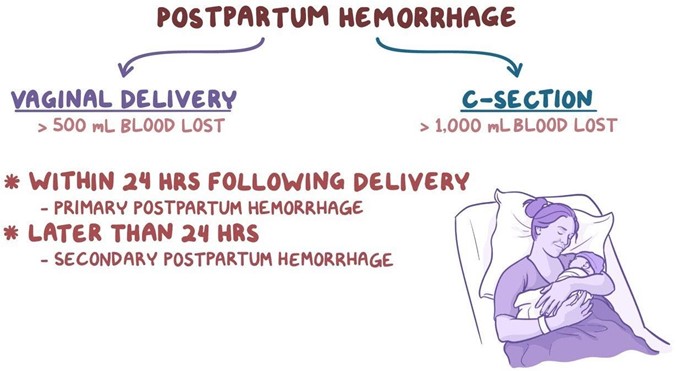The Mother-Baby nurse is caring for a two hour old newborn who is 36 4/7 weeks gestation. The nurse assesses that the newborn is experiencing tremors (jiteriness). What nursing action has the highest priority?
Select one:
Obtain a bilirubin level.
Place a pulse oximeter on the newborn.
Obtain a blood glucose level.
Take the newborn's vital signs.
The Correct Answer is C
Choice A Reason: Obtain a bilirubin level. This is an incorrect answer that indicates an irrelevant and unnecessary nursing action for a newborn with tremors or jiteriness. Obtaining a bilirubin level is a nursing action that is indicated for a newborn with jaundice (yellowish discoloration of the skin and mucous membranes), which can occur due to increased bilirubin production or decreased bilirubin excretion. Jaundice does not cause tremors or jiteriness in newborns.
Choice B Reason: Place a pulse oximeter on the newborn. This is an incorrect answer that suggests an inappropriate and insufficient nursing action for a newborn with tremors or jiteriness. Placing a pulse oximeter on the newborn is a nursing action that measures oxygen saturation and heart rate, which can indicate hypoxia (low oxygen level) or distress in newborns. Hypoxia can cause tremors or jiteriness in newborns, but it is not the only or most likely cause. Placing a pulse oximeter on the newborn does not provide enough information to diagnose or treat hypoglycemia.
Choice C Reason: Obtain a blood glucose level. This is because tremors or jiteriness are common signs of hypoglycemia (low blood glucose) in newborns, which can occur due to various factors such as prematurity, maternal diabetes, infection, or cold stress. Hypoglycemia can cause neurological damage or death if not treated promptly and effectively. Obtaining a blood glucose level is a nursing action that has the highest priority for a newborn with tremors or jiteriness, as it can confirm the diagnosis and guide the treatment.
Choice D Reason: Take the newborn's vital signs. This is an incorrect answer that implies an inadequate and delayed nursing action for a newborn with tremors or jiteriness. Taking the newborn's vital signs is a nursing action that monitors temperature, pulse, respiration, and blood pressure, which can indicate general health status and stability in newborns. Taking the newborn's vital signs may reveal signs of hypoglycemia, such as hypothermia, tachycardia, tachypnea, or hypotension, but it is not a specific or definitive test for hypoglycemia. Taking the newborn's vital signs may also waste valuable time that could be used to obtain a blood glucose level and initiate treatment.
Nursing Test Bank
Naxlex Comprehensive Predictor Exams
Related Questions
Correct Answer is C
Explanation
Choice A Reason: 3-2-1-0-2. This is an incorrect answer that underestimates the number of pregnancies and overestimates the number of preterm births. The client has had four pregnancies, not three. She has had one preterm birth, not two.
Choice B Reason: 4-1-1-1-3. This is an incorrect answer that overestimates the number of living children. The client has two living children, not three.
Choice C Reason 4-1-1-1-2. This is because the GTPAL method is a way of summarizing a woman's obstetric history using five numbers: G (gravida), T (term births), P (preterm births), A (abortions), and L (living children). Gravida is the number of pregnancies, regardless of outcome. Term births are deliveries after 37 weeks' gestation. Preterm births are deliveries between 20 and 37 weeks' gestation. Abortions are pregnancies that end before 20 weeks' gestation, either spontaneously or electively. Living children are the number of children who are alive at the time of assessment.
Choice D Reason: 4-1-2-0-3. This is an incorrect answer that overestimates the number of preterm births and living children, and underestimates the number of abortions. The client has had one preterm birth, not two. She has had one abortion, not zero. She has two living children, not three.

Correct Answer is D
Explanation
Choice A Reason: Moderate amounts of deep red lochia. This is not a finding that would warrant further investigation, but rather a normal finding for the early postpartum period. Lochia is the vaginal discharge that occurs after delivery, which consists of blood, mucus, and tissue from the uterus. Lochia is usually deep red in color and moderate in amount for the first few days after delivery.
Choice B Reason: Sweating while afebrile. This is not a finding that would warrant further investigation, but rather a common occurrence in the postpartum period. Sweating is a mechanism of thermoregulation that helps the body eliminate excess fluid and electrolytes that were retained during pregnancy. Sweating does not necessarily indicate fever or infection.
Choice C Reason: Voiding 350 mL of blood-tinged urine. This is not a finding that would warrant further investigation, but rather an expected outcome for the postpartum period. Voiding large amounts of urine is normal in the postpartum period, as the body eliminates the excess fluid that was accumulated during pregnancy. Blood-tinged urine may be due to trauma or irritation of the urinary tract during labor or delivery, which usually resolves within a few days.
Choice D Reason: Heart rate of 115 beats/minute. This is because a heart rate of 115 beats/minute is higher than the normal range for an adult, which is 60 to 100 beats/minute. A high heart rate may indicate postpartum hemorrhage, infection, pain, anxiety, or dehydration. The nurse should further assess the client for other signs and symptoms of these conditions and notify the physician if necessary.

Whether you are a student looking to ace your exams or a practicing nurse seeking to enhance your expertise , our nursing education contents will empower you with the confidence and competence to make a difference in the lives of patients and become a respected leader in the healthcare field.
Visit Naxlex, invest in your future and unlock endless possibilities with our unparalleled nursing education contents today
Report Wrong Answer on the Current Question
Do you disagree with the answer? If yes, what is your expected answer? Explain.
Kindly be descriptive with the issue you are facing.
